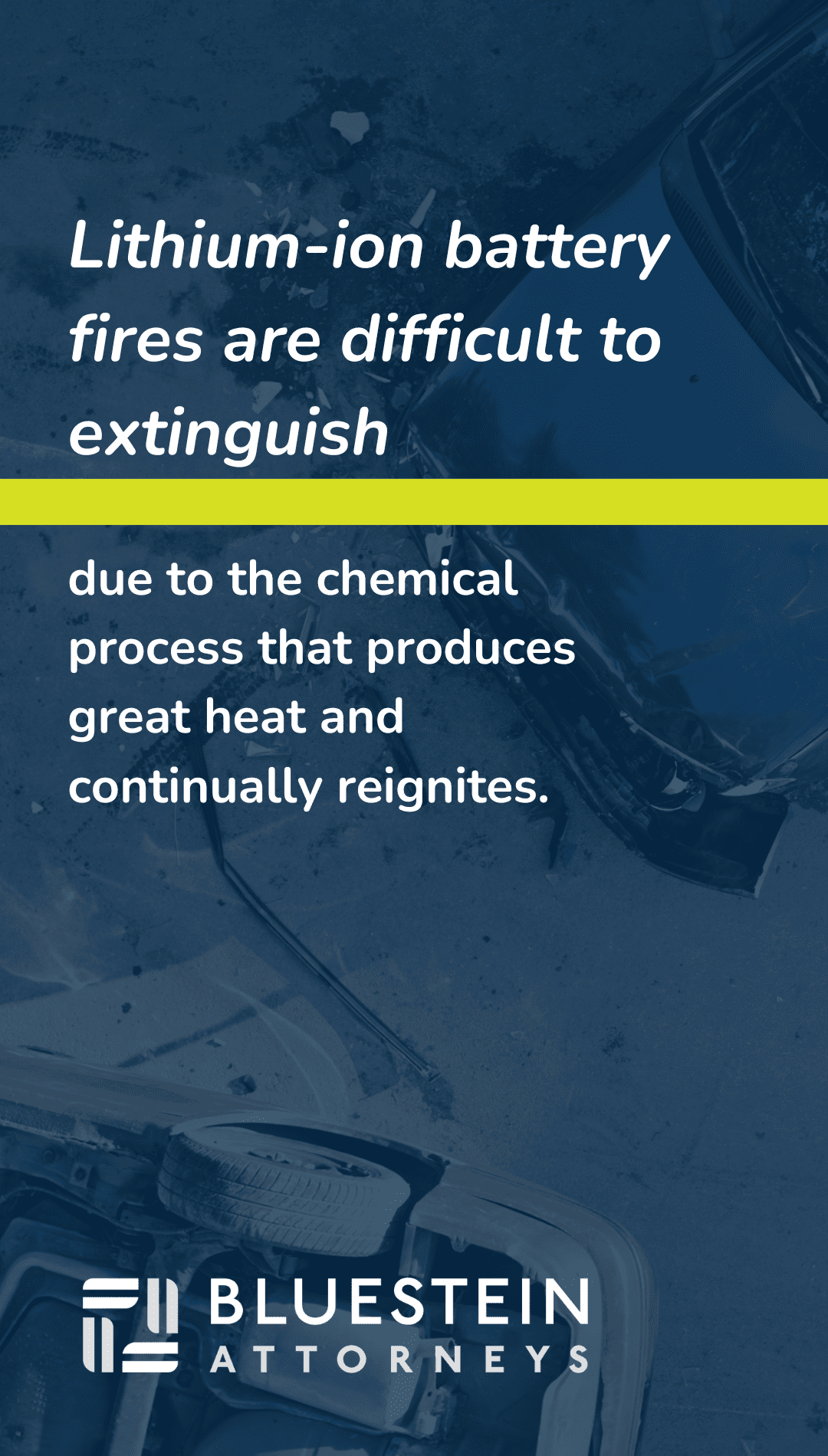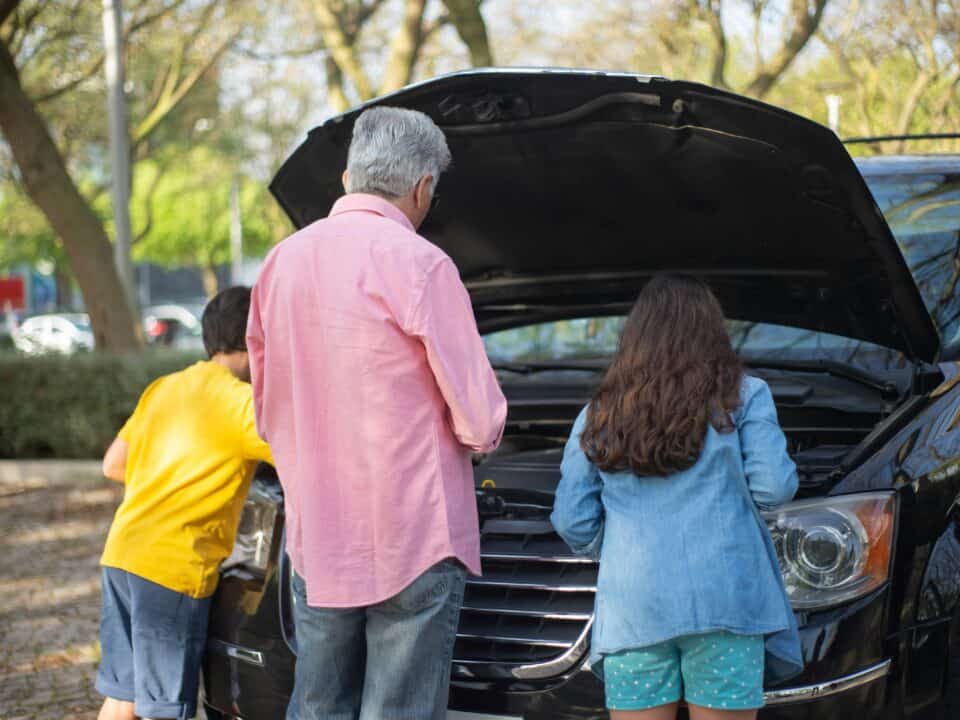Every device used to read this article contains a battery. Batteries are essential to our lives. They help us connect with friends and even make video calls during power outages. As devices have become more powerful, the batteries inside have become denser, with higher outputs and quicker charge times.
This growth has resulted in less expensive batteries capable of powering even high-performance sports cars. But there is a human cost to these batteries’ increased power and capacity because the energy stored inside a battery can be hazardous—and sometimes fatal.
News reports about the dangers of batteries are nothing new but are becoming increasingly common. While we must follow certain limitations when using batteries, such as during air travel, when mailing items, and throwing them away, there are many hidden dangers. Just in January, a multi-family home was burned down in Brockton, NY, after a lithium-ion battery caught fire as a result of “thermal runaway.” When thermal runaway occurs, the cells containing the highly corrosive component can rupture and burst resulting in extremely high-temperature gasses being released and either catching fire or causing chemical burns. Making matters worse, battery fires are rapid. The UL Fire Safety Research Institute found that it only took “15 seconds from the first sign of smoke to the windows being blown out in a house.”
Electric vehicles operate by using the energy stored in high-density battery cells that are stored in packs in the car. When a gas-powered vehicle crashes, the gas tank is reinforced to reduce the likelihood that the tank will rupture and cause a fire. When an electric vehicle crashes, the battery cells can be damaged, resulting in thermal runaway and a very high risk of serious injury to the occupants and the first responders.
In August of 2022, an electric scooter caught fire, killing a child and an adult. The resulting fire required “[o]ver 78 fire personnel” to put out. In July of 2022, an electric bus in Hamden, CT, caught fire and required hospitalization of three individuals. The danger? “[a]ccording to fire officials, lithium-ion battery fires are difficult to extinguish due to the thermal chemical process that produces great heat and continually reignites.” This does not mean that batteries and electric vehicles are inherently dangerous, but we must be aware of these risks to keep our families safe.
First, batteries must be operated according to their specifications. Batteries that get too hot can result in serious injury, so be aware of your devices being left in the sun too long or becoming overheated from constant use. There is also concern that exposure to salt water may also result in battery fires. If you notice something abnormal about the batteries in your vehicle, immediately assess the potential dangers because these warning signs can indicate an imminent fire hazard.
Second, the cables and adapters to charge our devices remain expensive as new types of cables come and go. The common solution for many families is to buy cables you may find at local stores or online from third-party providers because they are less expensive. The problem is that these cables may be untested so they provide too much voltage to the battery, overcharge the battery, or cause an electrical short. Any of these issues can result in a battery catching fire. For families that have children, this means having conversations about the safe and proper use of batteries and electronic devices.
Third, we must be aware of the ways new technologies can have unintended side-effects. As the UL Fire Safety Research Institute found, it takes only 15 seconds for a lithium-ion battery to generate a serious fire. These fires can reignite and can discharge corrosive and flammable gases. This means first responders face the greatest risk of being injured when an electric vehicle catches fire because fire department training and equipment remain “lagging in many places.”
Finally, you should always consider speaking to an attorney if you have been injured or lost your possessions in a fire—whether you are burnt by someone misusing a battery, a first responder trying to put out an electric vehicle fire, or you lose your home from a battery that ignites during charging. As with all technology, batteries have made our lives easier and simpler, but we must still be aware of the potential dangers so we are prepared when something goes wrong.

1 IEA, Evolution of Li-ion battery price, 1995-2019, IEA, Paris https://www.iea.org/data-and-statistics/charts/evolution-of-li-ion-battery-price-1995-2019, IEA (noting that in 1995, the cost per kWh of a lithium-ion battery was $6,745.80; in 2019, the cost had decreased to only $156.00 per kWh. In 24 years, the cost of the same lithium-ion battery went down 97.7%.)
2 https://www.faa.gov/newsroom/lithium-batteries-baggage.
3 For a quick primer, EV FireSafe has a quick primer available at: https://youtu.be/M9Cl6_Y2rXU?t=23.
5 While Lithium-Ion battery technology is the most common high-density type of chemistry used, there are other types such as nickel-cobalt-aluminum that have similar risks of thermal runaway. For more information, check out https://insideevs.com/news/587455/batteries-tesla-using-electric-cars/.
6 https://www.nbcnews.com/news/us-news/e-scooter-batteries-sparked-blaze-nyc-apartment-killed-woman-5-year-ol-r cna41536. See also, https://www.wltx.com/article/traffic/two-dead-electric-car-tree-catches-fire-lake-murray/101-7ca404ff-9980-42bd-af b7-7efdfbbaf9da.
8 Jack Danielson, Response Letter to Mr. Patronis, October 14, 2022, available at, https://s3.documentcloud.org/documents/23132299/nhtsa-221011-003-response-letter-to-mr-patronis-signed.pdf.
9 Alan Levin, Electric-Car Era Threatens Firefighters with New Roadside Risks (Corrected), Electronic Commerce & Law Report (BNA), May 23, 2018. https://www.nbcnews.com/news/exploding-problem-fires-sparked-lithium-batteries-are-confounding-fire-rcna65739



